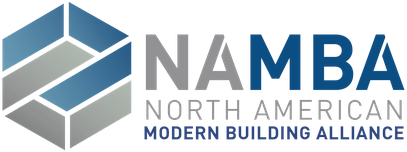September 24-25, 2025
On February 23, 1991, a fire began on the 22nd floor of One Meridian Plaza in downtown Philadelphia. Many factors contributed to create a unique challenge for local firefighters, who struggled to contain the blaze for hours—three of whom tragically lost their lives. The fire was not immediately detected and delayed the fire department’s response: standpipe water pressure was not sufficient, fire barriers were incomplete, windows failed when exposed to heat, and there was no power in the building. The fire was eventually contained by the sprinkler system on the 30th floor, one of the only floors to have sprinklers installed. The incident became one of the most consequential high-rise fires in U.S. history.
The hard lessons from that tragedy set the tone for the second annual Building Fire Safety Symposium, held two blocks from the former site of One Meridian Plaza. Bringing together industry leaders, experts, and professionals, the presentations and discussions centered around different aspects of the five common principles of fire safety (prevention, detection and communication, occupant protection, containment, and extinguishment) and underscored the vital role the entire building value chain plays in achieving an appropriate level of fire safety. A few major takeaways emerged from this year’s symposium:
Global Coordination is Essential
With an ever-evolving patchwork of codes and standards around the world affecting fire safety in the built environment, navigating compliance is complicated.
“Different countries have different definitions of combustible materials,” said veteran fire safety expert Marcelo Hirschler. “There are lots of different tests that inform codes and regulations.”
Dwayne Sloan, Director of Principal Engineering at UL Solutions, emphasized the importance of global coordination to address these differences. Beginning in 2018, Sloan helped develop the International Fire Safety Standards (IFSS) Coalition at the UN to help countries come together to fill in gaps. The coalition created the Global Common Principles, a framework for fire safety from design to construction to building management.
Efforts like this are critical to promoting consistent fire safety practices around the world to keep people, communities, and property safe.
Safety is Always Evolving
The Symposium’s technical sessions examined the question of what qualifies as a noncombustible material, contrasting theoretical definitions with their practical application in codes and standards. Another session focused on the critical role of engineering judgments in maintaining fire protection and life safety, particularly when direct testing of wall assemblies is not feasible due to the wide range of configurations and the high cost of large-scale tests such as NFPA 285. Together, these discussions emphasized that fire safety is a continually evolving discipline, driven by new materials, emerging technologies, and the ongoing need to align research, testing, and real-world application.
Jon Nisja of the National Fire Sprinkler association presented data from the National Fire Incident Reporting System, which tracks over 1.3 million fires each year in the United States. Those incidents have resulted in 3,670 deaths and 13,350 injuries annually. While most fires occur outside structures, most deaths happen within them, demonstrating the importance of early detection, strong fire barriers, and effective suppression systems.
Fire prevention goals remain focused on protecting life and property and minimizing foreseeable loss. Nisja reminded attendees that sprinklers continue to be one of the most effective tools for saving lives in structure fires and that more widespread use could significantly reduce fatalities.
Christine Reed of the International Code Council spoke about another growing challenge: the growing presence of lithium-ion batteries in the built environment. As battery-powered devices and e-mobility products become increasingly common in homes and workplaces, the potential for incidents rises. Thermal runaway in lithium-ion batteries has become a leading concern, emphasizing the need for updated codes, guidance, and public awareness as these technologies become more deeply integrated into everyday spaces.
Fire safety is not static. Materials, technologies, and lifestyles continue to change, and the systems that protect people must evolve with them.
The Future is in Good Hands
The future of fire safety is in the hands of students and people early in their careers, a contingent that was well represented at this year’s symposium.
For Morgan State graduate researcher Kianna Spencer, the sessions offered “practical guidance on key safety topics” that bridged the gap between the classroom and real-world design. “It’s the kind of knowledge that directly impacts how I think about design and development moving forward,” she said.
Rachel Maxwell, an architecture student at Howard University, said the experience “opened up a whole new industry” for her, helping her see how disciplines like architecture, construction, and fire science intersect. “Through this opportunity, I got to build my network not just professionally, but academically, while broadening my knowledge on what safe, impactful design means.”
For recent graduate Eduardo Valdes-Trujillo, the symposium highlighted how early engagement with fire safety can shape a construction career. He recalled learning that “80 percent of fires occur in residential homes,” a statistic that strengthened his resolve to promote active prevention measures in homebuilding.
Even seasoned professionals felt re-energized. Bryan Toepfer, principal architect and returning attendee, called this year’s symposium “once again my favorite event,” noting that the lessons learned have informed every project he’s worked on since last year’s gathering.
William Koffel, professor of fire protection engineering at the University of Maryland, closed the symposium with a presentation on educating and recruiting the next generation. “There are not enough fire protection engineers,” he said. “Our program has 100% job placement, with each graduate receiving multiple offers.”
From the lessons of One Meridian Plaza to the next generation of architects and engineers, this year’s Building Fire Safety Symposium reinforced that progress in fire safety comes through learning, collaboration, and constant evolution. The conversations in Philadelphia reflected a community that honors the past while preparing for the future.
We will see you in Chicago next year!

